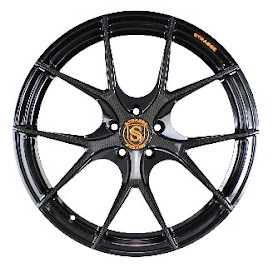If you own a car, you’d already know that more than a dozen tyre brands are on the market today. Unfortunately, the mass production of car tyres with modern technology has opened up a breeding ground for poor-quality tyres and subpar brands to infiltrate the market.
This makes differentiating the good and the bad ones a challenge for many. If you are a car owner who’s not looking to compromise on quality, you should certainly consider investing in the best tyre brands in Malaysia for a rewarding experience.
1. Michelin
French tyre manufacturer Michelin is known for producing some of the best car tyres and remains a top contender for other brands. Among other things, Michelin tyres are known for their excellent fuel efficiency while lasting for a long time with unbeatable performance.
As a pioneer in the market, Michelin also provides an extensive product catalogue that enables customers to choose the best tyres that suit their needs and driving conditions at all times.
Advantages:
- Excellent fuel-efficiency
- Durable
- Plenty of choices
- Excellent warranty
Everyone knows Japan’s position in the automotive industry. Apart from being a global importer of cars, the Eat-Asian country also specialises in tyres. Among the many famous brands from Japan, Bridgestone is well-known for car tyres that deliver top-notch performance and excellent handling.
Their tyres often have long tread life, so you can use them for extended periods. They are also smooth when driving and provide excellent support during dry and wet climates, which matches Malaysia’s tropical weather.
- Advantages:
- - Good performance
- - Long tread life
- - Comfortable driving
- - Dry and wet climate support
Originating from Germany, Continental car tyres provide superior performance and safety to its consumers. Continental is a popular tyre brand in Malaysia because of its comprehensive product catalogue, like Michelin and its versatility to support both dry and wet climates in Malaysia.
As a premium brand, Continental tyres produce less noise while driving, and their improved safety is hard to find cheap tyres.
Advantages:
- Great performanceAmerican tyre brand Goodyear has innovative technologies and tyre designs that help improve fuel efficiency. Goodyear’s tyres provide comfortable and smooth rides with excellent braking performance, especially on wet surfaces. These tyres also offer good value for money, given their superb quality, which makes them last long.
Advantages:
- Excellent handling
- Value for money
- Excellent wet grip
- Comfortable and smooth ride
Yokohama is another tyre brand from Japan. These tyres deliver good performance, and they are affordable at the same time. This combo is hard to find in many other affordable tyre brands in Malaysia.
Yokohama tyres are suitable for car owners who are looking for eco-friendly options as they are made from oils from orange peels using nanotechnology. They are also durable and have high resistance to wear and tear.
Advantages:
- Good performance
- Durable
- Eco-friendly
- Affordable





















